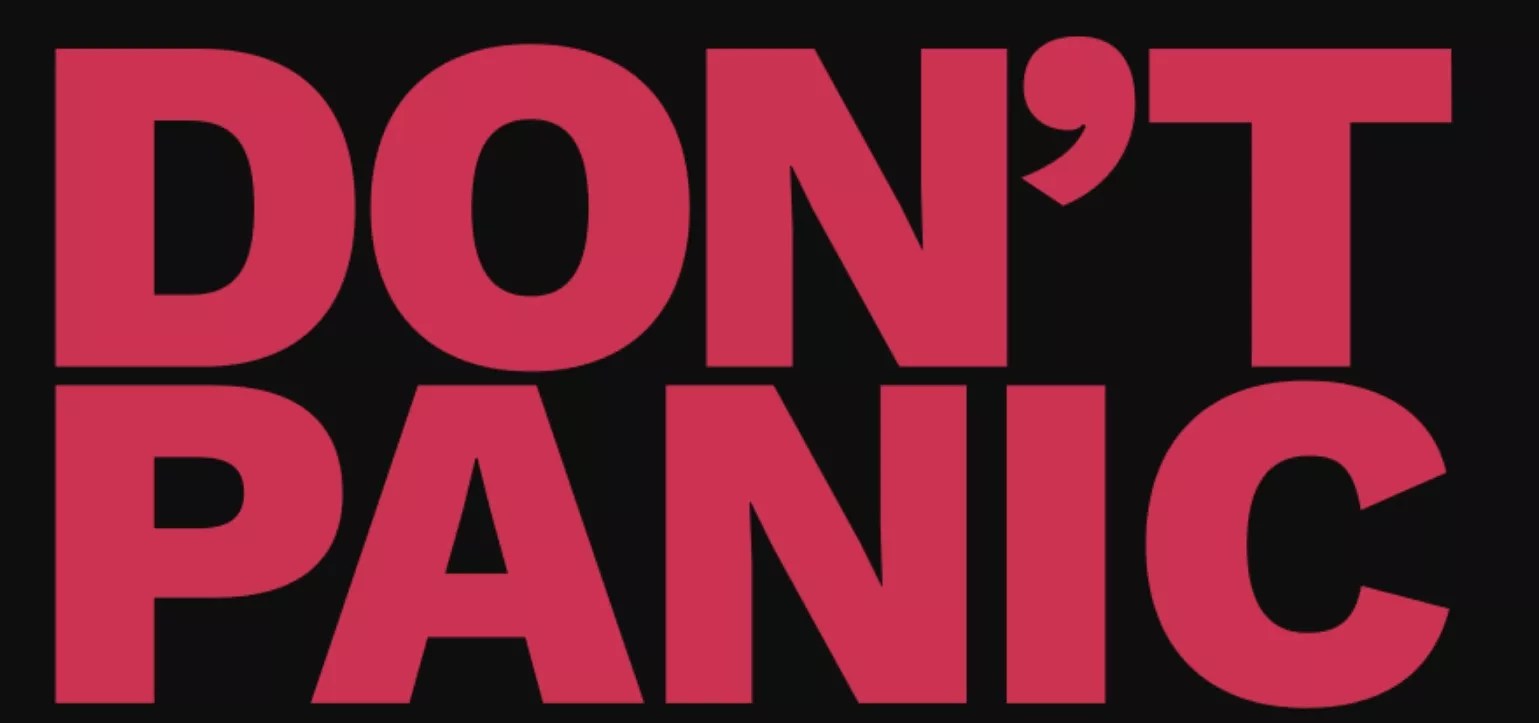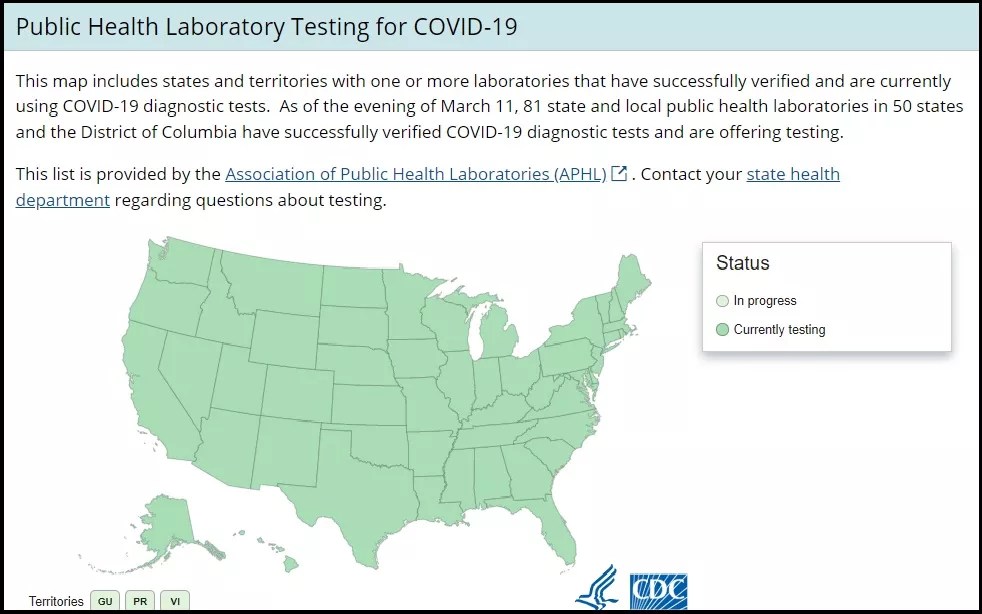
nclm / Wikimedia Commons

Audio By Carbonatix
If I could have one wish, which I can’t, it would be that people would stop telling me not to panic. Panic is a personal matter. I don’t need public officials or editorial writers telling me whether to panic or not. And, by the way, nothing they say is going to change how I or anybody else feels anyway.
“Our response is one of the best, with fast action of border closings & a 78% Approval Rating, the highest on record.” — Donald Trump
I know people who wouldn’t panic falling off a cliff in the Grand Canyon. And I know people who would have meltdowns and not be able to get out of bed if they heard that the Academy stores have all run out of plastic soft-bait fishing lures.
None of that is susceptible to directives from officials or newspaper editorial pages. It’s how we are. And we live our lives according to how we are. Coronavirus doesn’t change that.
Please don’t take this as some kind of too-cool-for-school message about how coronavirus is no big deal. Ha! It is to me. The story I may never tell on myself – let me think about it – is my toilet paper hoarding escapade at Costco. I was halfway home when a still small voice spoke to me from under the dashboard: “Jiiiim, this is the still small voice under the dashboard. Please tell the still small voice one thing. Why toilet paper?”
I don’t think I’m telling that one.
But I do have a number of additional objections to the don’t-panic message that I would like to share with you. First, let’s look at it in simple terms of messaging.
If a loved one, neighbor, employer or the friend of someone you care about calls you and starts by telling you not to panic, what’s the first thing you do? They might as well say they have something really important to tell you but first you have to turn off CNN, sit down, put your head between your legs and breathe into a bag.
You panic. Of course. How could you not? You stay panicked until they finally get to the part about why you shouldn’t panic:
“But the bank manager went down to the sheriff’s office and told them your son was just making a regular withdrawal and it was all a big mistake, and the sheriff told CNN he felt really bad about the big chase scene on national TV.”
I’m a writer. I tell stories. I have a certain familiarity with the structure of a good story, or, as it’s called in the trade, the arc. I have my own suspicions about why some people love to start the story with the do-panic part and then take a year and a half getting to the don’t.
It holds your attention. The don’t-panic message invests the story-teller with a certain authority and power, especially when the message comes from an official or the media. It’s very patronizing.
OK, not always. I’m perfectly willing to concede that your aunt or sister might tell you not to panic because that person genuinely does not want to cause you pain and suffering. I don’t think it works. But the intention is good. That motivation is not cynical.
But that brings us to a whole other venue, the public arena, in which the motivation may be suspect. Public officials telling me they don’t have any test kits but I’m not supposed to panic just piss me off.
If he could hear me, I would say, “This, sir, is not panic. This is outrage. Your job, your whole reason for being there in the first place was to have enough test kits. It’s called emergency preparedness.”
Clearly there must be all kinds of reasons, a million logistical excuses to explain why the United States of America winds up with pitifully fewer test kits and respirators per capita than South Korea. But this is not the moment when any of us wants to hear the excuses. This is the moment when we want to see tons of test kits and the respirators.
In fact, let’s do a logic test here: The messaging is, 1) Don’t panic; 2) Pandemic; 3) No test kits; 4) Everything under control. Does anybody else see a hole or a short-circuit in there somewhere, a disturbing illogicality that might erode basic credibility?
And that raises the question of what they could be saying or doing instead. First, they should shut up about panic. It’s our panic, and we’ll panic if we want to.
Next, they could start giving us up-to-the-minute, detailed information about incidence, spread, testing locations and test results. Maybe this will have changed by the time you read this article, but at the end of last week when I was writing it – weeks into the crisis – I went to the website of the Centers for Disease Control and Prevention looking for testing sites.
Under the legend, “Public Health Laboratory Testing for COVID-19,” the CDC page showed me a map of America. No dots, no push-pins or little flags to show where the labs are, just America. The whole country.
So I guess the point of the map is, if you think you might be sick and you want to be tested, go to America. They must have a lab there somewhere.
My own thought – and I know this would be very wrong and I would never do it – was, “How about I try to sneak into South Korea instead?” That’s a terrible thought. But it does occur.
At the end of last week, Dallas County Judge Clay Jenkins held a news conference in which, among other things, he did a great job laying out the facts known at that moment. As we know from Jenkins’ masterful handling of Ebola six years ago, he understands the importance of public candor in a crisis, and he has the right personality for it.
But the next day after Jenkins’ news conference, the Dallas County Health Department’s coronavirus webpage still said the same thing it had said for the previous 48 hours: “Cases of COVID-19 have been identified in Dallas County. Dallas County Health and Human Services is continuing to work closely with the CDC and the Texas Department of State Health Services to monitor … blah blah blah.”
“Cases?” You’ve got to be kidding me. How many cases? What ages were the people? Where? What’s the status of the testing and confirmation of results? What are the relationships between the cases, either personal or geographical? What underlying conditions did the victims have? And while you’re at it, where can I go get a damn test?

If you think you have coronavirus and you’re looking for a place where testing might be available, the CDC map seems to say that you should go to America. Somewhere. (Clicking on it won’t help and may increase panic.)
Centers for Disease Control and Prevention
Jenkins answered some of those questions at his press conference, with the notable absence of information about testing. But in the era of connectivity, a press conference is a pretty old-school analog way of getting the information out there. I’d like to be able to get the answers whenever I feel like it on my phone. That would go a long way toward calming me down.
“To this point, and because we have had a very strong border policy, we have had 40 deaths related to CoronaVirus.” — Donald Trump
And I guess that brings us to the awful topic I wish I could avoid – the national problem. We can’t get away from this without at least mentioning the orange elephant in the room – the one that makes me want to cover my ears and avert my eyes.
Last week the President of the United States tweeted that he’s been getting great ratings for his pandemic response: “Sleepy Joe Biden was in charge of the H1N1 Swine Flu epidemic which killed thousands of people,” Donald Trump said in a Tweet. “The response was one of the worst on record. Our response is one of the best, with fast action of border closings & a 78% Approval Rating, the highest on record. His was lowest!”
Sweet. Jesus. Pandemic response approval ratings? I don’t want to believe there even are such things. But, yeah, I suppose.
He also tweeted that his border policy will save us: “To this point, and because we have had a very strong border policy, we have had 40 deaths related to CoronaVirus. If we had weak or open borders, that number would be many times higher!”
The only border Trump has ever talked about or put his hand to is the one with Mexico. At the moment he tweeted, Mexico had 16 confirmed cases and no deaths compared with more than 1,800 cases and 41 deaths in the United States, and pressure was mounting within Mexico for Mexican authorities to close the border. Even though I would never ever do it, it did briefly occur to me that perhaps I and my loved ones should get to Mexico before they shut us out.
The day after County Judge Jenkins’ press conference, Gov. Greg Abbott announced a major statewide drive-thru testing program. That un-panicked me somewhat. Then President Trump came on the air and stumbled through a speech declaring a national emergency. His jerky-weird disassociated manner re-panicked me briefly, but I got it under control.
I know there is no sneaking into South Korea or Mexico for most of us. We are here, locked up inside this box, and we will have to deal with whatever happens here as best we can, with whatever dignity and effectiveness we can muster. We won’t change our personalities or our characters because some editorial writer tells us to. These are the tests that tell us who we were already.
Speaking of which, yes, I did go to Costco. So I get there. I have another legitimate reason for going. But I see all these people lined up at the cash registers with giant loads of toilet paper.
Long story short, I wind up at the back of the store where they bring stuff in off the trucks, and I’m waiting in this little crowd of anxious, beady-eyed people. When the pallet comes in, I grab the max amount allowed – two gigantic bales, probably enough to keep my household in toilet paper through a couple pandemics.
On the way home, the still small voice speaks to me from under the dashboard: “So, Jim, how does the gigantic supply of toilet paper that’s all you can see in your rearview mirror square up exactly with your big don’t panic thing?”
I never said don’t panic. I said don’t talk to me.